If you’re craving a short break that’s more calm than chaotic, Da Nang might just be your next long weekend hero. This Vietnamese coastal city has quietly become a favourite among Singaporean travellers, and it’s not hard to see why. It’s often overshadowed by Hanoi’s history and Ho Chi Minh City’s energy, but Da Nang’s charm lies in its slower rhythm.
This 3D2N itinerary is designed for Singaporeans who want a bit of everything without rushing. You’ll get a mix of nature, culture, iconic sights, and underrated spots. Whether you’re touching down on a Friday morning or arriving early Saturday, here’s how to make the most of your time in Da Nang without wearing yourself out.
Also read: Da Nang Travel Guide: How I Made My Trip Smoother and Cheaper!
Day 1: Marble Mountains ➝ Cham Sculpture Museum ➝ Riverside cafe ➝ Dragon Bridge
Walk through marble caves and mountaintop shrines
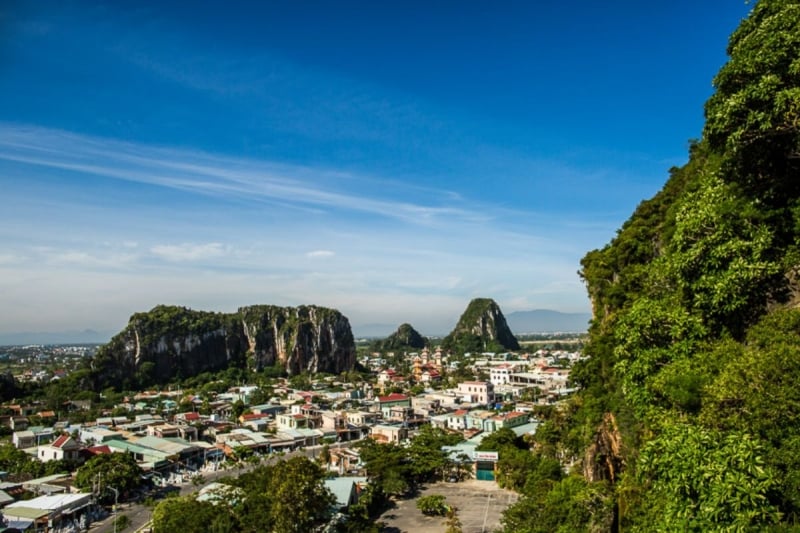
Image Credit: Vietnam Tourism Official Website
Start your Da Nang trip with one of the city’s most iconic sights: the Marble Mountains. This cluster of five limestone peaks is home to hidden caves, Buddhist temples, and panoramic viewpoints of the coastline. The area has long been linked to stone carving traditions, and you’ll still find workshops at the base of the mountains. Wear comfortable shoes and take your time climbing the stone stairways, stopping in the cool, incense-filled grottoes that open up unexpectedly between mossy rock faces.
Cool off with a cultural deep dive
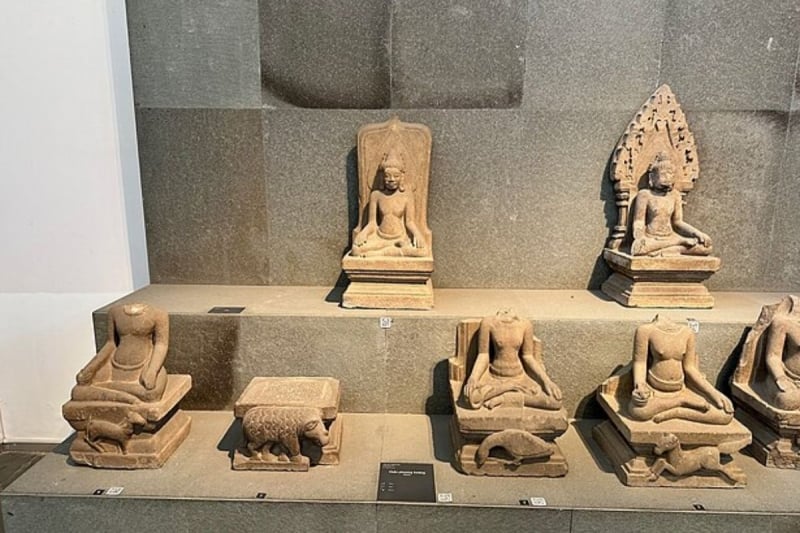
Image Credit: Ms Sarah Welch via Wikimedia Commons
Once you’ve wrapped up your mountain wanderings, head back into the city for a visit to the Museum of Cham Sculpture. This compact, air-conditioned museum holds one of the world’s best collections of Cham artefacts, with intricate sandstone carvings and statues that reflect the rich religious history of central Vietnam. It’s a quiet, reflective spot that’s well worth an hour or two, especially during the warmer hours of the afternoon.
Sip and slow down by the Hàn River
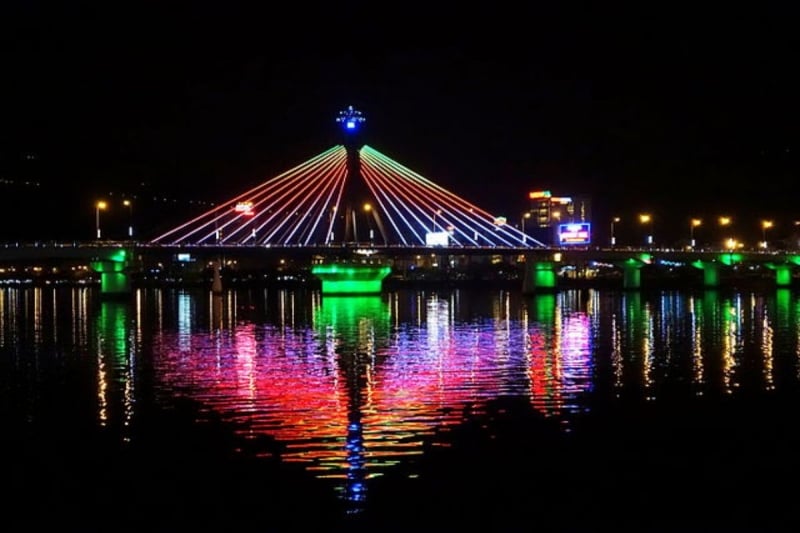
Image Credit: Daderot via Wikimedia Commons
After your museum visit, wind down at one of the riverside cafés along Nguyen Chi Thanh or Bach Dang. Whether you go for a traditional Vietnamese coffee or something iced and fruity, this is a good time to rest your legs and ease into the city’s pace. The view of the Hàn River is especially calming in the late afternoon, with the occasional fishing boat or ferry drifting past.
Catch the lights at Dragon Bridge
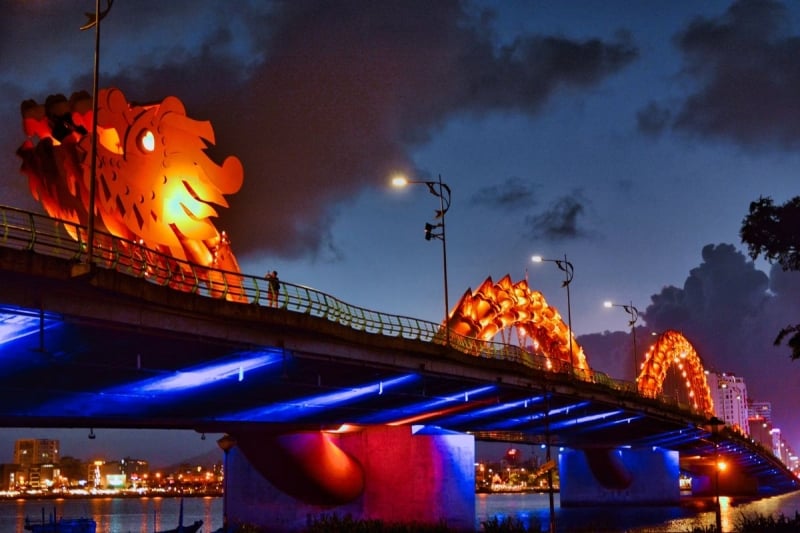
Image Credit: allPhoto Bangkok via Wikimedia Commons
As night falls, make your way toward Dragon Bridge. This steel dragon sculpture spans the Han River and lights up in different colours after dark. If you’re visiting on a Saturday or Sunday, stay a little longer to catch the fire and water show at 9 PM. It only lasts a few minutes, but the atmosphere is lively and local. For a full view, you can watch from the riverside path or grab a seat at one of the open-air spots nearby.
Also read: Where to Eat in Da Nang, Vietnam: 10 Must-Try Places For First-Time Visitors
Day 2: Sunrise at My Khe ➝ Linh Ung Pagoda ➝ Fine Arts Museum ➝ Han Market or Night Market
Catch a sunrise at My Khe Beach
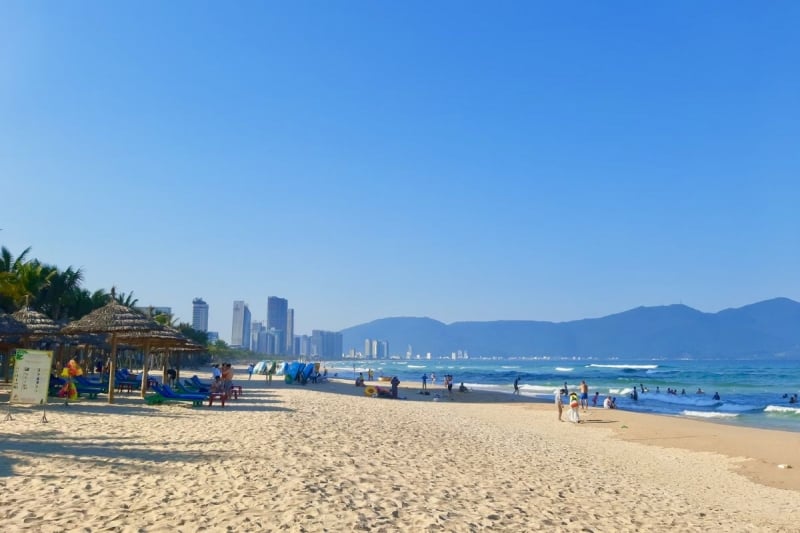
Image Credit: Phuc Le | Unsplash
If you can wake up early, head down to My Khe Beach to see the sky turn pink over the East Sea. Locals often gather here at dawn for morning swims, beach workouts, or just to sit quietly with a coffee in hand. The beach is wide and clean, with soft sand and gentle waves, and it’s one of the few moments in the day when the city feels completely still. After sunrise, you can walk along the shoreline or grab a light breakfast from one of the nearby stalls.
Visit Da Nang’s tallest statue
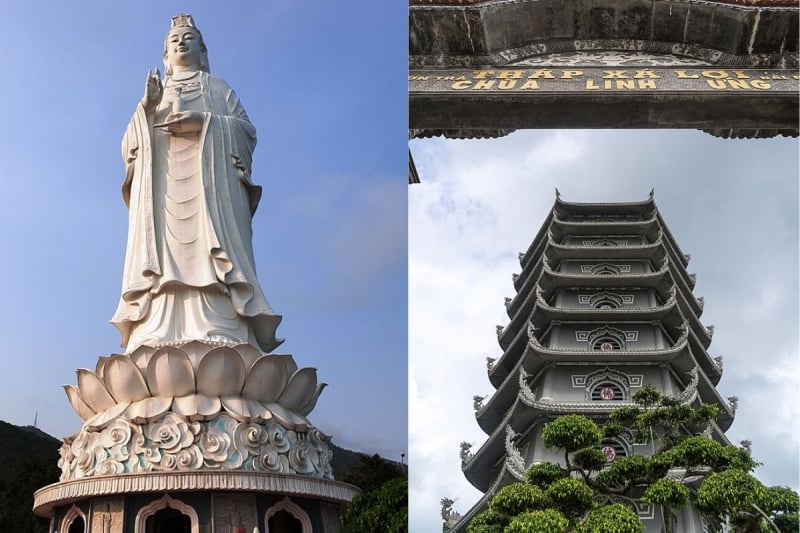
Image Credit: (L-R) Phương Huy via Wikimedia Commons; Alexkom000 via Wikimedia Commons
By late morning, make your way to the Son Tra Peninsula and visit Linh Ung Pagoda. Perched on a hill overlooking the sea, this peaceful Buddhist complex is home to the 67-metre Lady Buddha statue — the tallest in Vietnam. You’ll be able to spot her from the beach, but standing at her feet gives you a better sense of the scale and serenity of the site. On a clear day, you’ll also get panoramic views of Da Nang’s coast and city skyline from the temple grounds.
Take a quiet break at the Fine Arts Museums
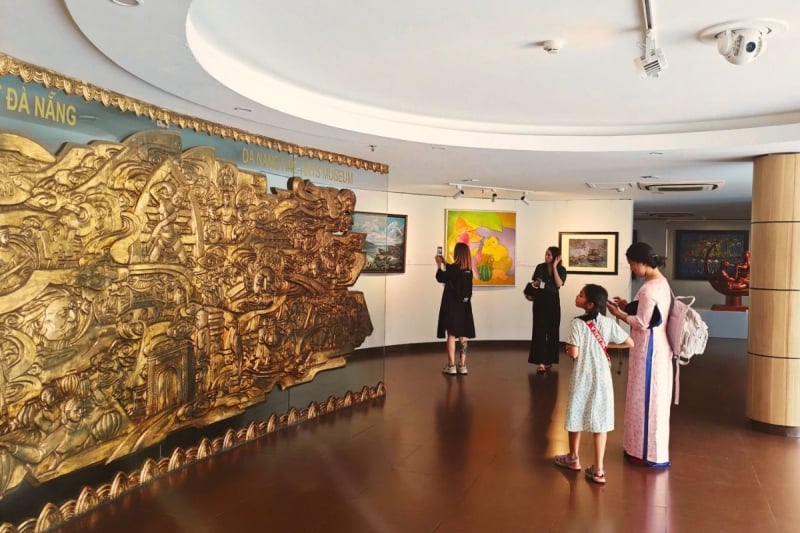
Image Credit: Da Nang Fine Arts Museum Official Facebook Page
After lunch, slow things down with a visit to the Da Nang Fine Arts Museum. It’s a small but thoughtful space featuring artworks by central Vietnamese artists, including oil paintings, lacquer works, and woodblock prints. The galleries upstairs are usually quiet, and the building itself is bright and spacious. This is a good stop for travellers who want something a little different from temples and beaches, or just a cool place to recharge in the afternoon heat.
Wander through the market scene
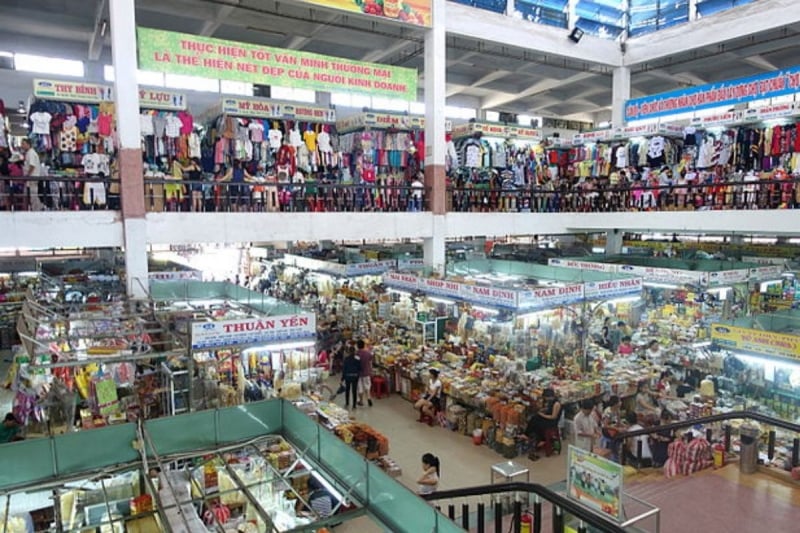
Image Credit: Daderot via Wikimedia Commons
In the late afternoon, head to Han Market or one of Da Nang’s night markets, depending on your mood and energy. Han Market is best for picking up local snacks, dried seafood, and small souvenirs, while the night markets offer street food, clothing stalls, and plenty of people-watching. If you didn’t catch the Dragon Bridge show on Day 1, this is a good chance to swing by again and see the city light up after dark.
Day 3: Ba Na Hills ➝ Golden Bridge ➝ Hoi An Old Town ➝ Departure
Ride up into the clouds at Ba Na Hills
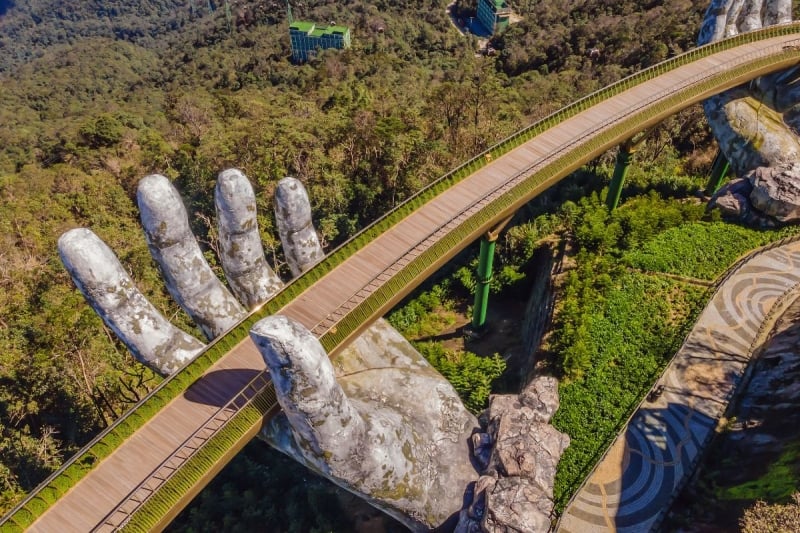
Image Credit: galitskaya via Canva Pro
Start your final day early with a trip to Ba Na Hills, a hilltop resort complex located about 40 minutes from Da Nang. The main draw is the cable car ride, one of the longest in the world, which carries you above lush forests and into cooler mountain air. At the top, you’ll find the Golden Bridge — the now-famous walkway held up by a pair of giant stone hands. It’s best to arrive early to avoid crowds and catch the soft morning light on the hills.
Wander through a European-style village
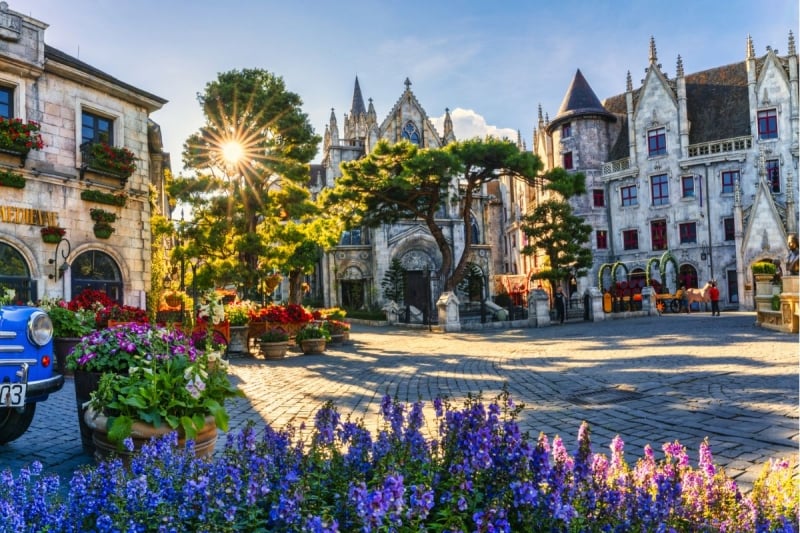
Image Credit: Mercure Da Nang Official Website
Once you’ve walked the Golden Bridge, spend some time exploring the rest of Ba Na Hills. The French Village is styled after medieval European towns, with cobbled streets, fountains, and pastel buildings. There are also flower gardens, temples, and an indoor arcade if you’re travelling with kids or just want to escape the sun. Depending on your pace, you can either have lunch here or head back to the city before continuing to your next stop.
Soak in the charm of Hoi An

Image Credit: Vietnam Tourism Official Website
In the afternoon, take a detour to Hoi An, a beautifully preserved trading port that feels like a world away from the bustle of modern Da Nang. The Ancient Town is best explored on foot, with lantern-lit alleyways, wooden shophouses, and a slow, riverfront rhythm that’s perfect for unwinding. Visit the Japanese Covered Bridge, stop by a teahouse or herbal drink stall, and browse the craft shops for something to bring home.
Wrap up and head back
Depending on your flight time, you can choose to depart directly from Hoi An or return to Da Nang for one last café stop or a quick meal before heading to the airport. If you’ve still got time to spare, a final walk along the Han River never hurts.
Also reade: 12 Fun Things to Do in Da Nang, Vietnam for First-Time Visitors
Parting tips

Image Credit: fabianirsara via Canva Pro
Getting around
Grab is the most convenient option for travellers in Da Nang. It’s affordable, reliable, and covers most major sights, including Marble Mountains and the airport. If you’re visiting Ba Na Hills, try to head out early in the day. Traffic near the cable car station can get busy, especially on weekends when local tourists head up for day trips.
What to pack
Da Nang is humid and warm for most of the year, so breathable clothes, sunscreen, and a cap or sunhat are must-brings. If you’re planning to catch sunrise at the beach or heading up to Ba Na Hills, pack a light outer layer. Mornings and mountain air can feel surprisingly cool, especially if it’s cloudy. Footwear-wise, go with something that handles both city pavements and light climbs.
Best time to visit
The most pleasant months are from March to May and September to early November, when the skies are clearer and the crowds are smaller. June to August is peak tourist season, which means livelier energy but also more queues and higher accommodation prices. If you don’t mind some occasional heat, early March or late September often offer the best balance.
Weekend bonus
If your trip falls on a Saturday or Sunday, be sure to catch the Dragon Bridge fire and water show at 9 PM. It lasts less than 10 minutes but draws a cheerful local crowd and makes for a memorable end to your night. Try to arrive 10 to 15 minutes early for a good view along the riverbank.
Also read: The Ultimate Guide to Train Travel in Vietnam for Singaporeans
Final thoughts

Image Credit: thanhhoa tran via Canva Pro
Da Nang is very accessible, easy to enjoy, and just the right pace for a short trip. You’ll get a mix of beach time, sightseeing, and good food without needing to plan too much or travel too far. This itinerary keeps things simple so you can explore at your own pace, making Da Nang a solid pick for your next weekend getaway.




